Victorians and the aesthetic myth of children's purity.
mardi 26 août 2014
After a very long hiatus, I'm back with a new article. This time, I would like to address a very controversial subject which is how most Victorians upper-class poets, artists, men (mostly) regarded children. I'm no specialist on the subject and I only did a pretty light research, moreover it seems that scholars are still questioning the ambiguous relationship many Victorian artists had with young children. To put it in a nutshell, just consider this article as a summary of what I could gather on the subject by reading some essays on the subject.
 "Heaven lies about us in our infancy!"
"Heaven lies about us in our infancy!"
Most of you might have heard of Victorian children either through Lewis Carroll's
Alice's adventures in Wonderland, James Barrie's
Peter Pan or Charles Dickens' numerous novels. You might also know that during queen Victoria's long long reign over the British Empire, the number of children among the global UK population increased a lot, so queen Victoria was actually ruling over an average population composed of more than 1/3 of children under the age of 15. Many children had to work in factories or coal mines, which resulted in an increased child mortality rate (check Dickens' novels about working children, he knows what he's writing about as he, himself was sent to work in an infamous workhouse when he was a child).
But as many Victorians did not seem to mind the fact that children, sometimes under the age of 5, were working in factories, an increasing number of men and women seemed to consider childhood as a "sacred" or "golden" age. It seems that many Victorians revered children as innocent and pure and "unspoiled" beings who should be preserved and whom you enjoyed the company as a distraction from the ugly practical world and the stress, the quick industrialization of the country was putting on the Victorians' shoulders.
But even if Victorians seem to consider children as free from the constraints of their "materialistic" society as one can be, it seems that anything and everything (ranging from teacups to calendars, clothing and magazines) featuring children used to sell out very quickly. And stage plays featuring children used to be very popular as well even if in most of them, children were mostly used as "props" in the background and not acting properly.
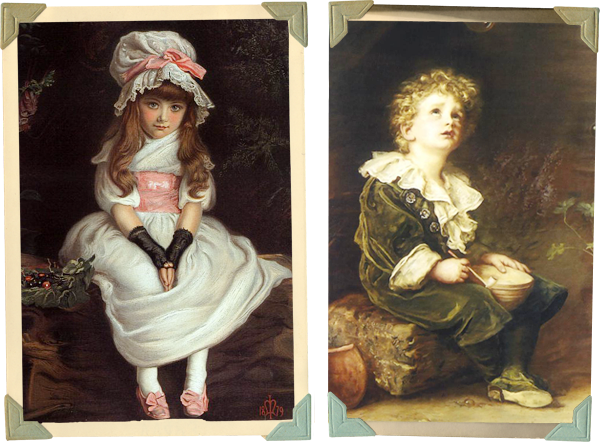
Millais' "Cherry Ripe" (1879) and "Bubbles" (1886) were used by the Pears Soap Company on their boxes
 "The cult of the Child"
"The cult of the Child"
The most controversial Victorian adult/child relationship to this day surely is Charles Lutwidge Dodgson (a.k.a. Lewis Carroll) and little Alice Liddell's one. After visiting an exhibition of Dodgson's photographic works in New-York, Vladimir Nabokov is reported to have said there was “a pathetic affinity” between the photographer and the pedophilic narrator of his novel
Lolita... So was Lewis Carroll somebody you would not want children to get close to?
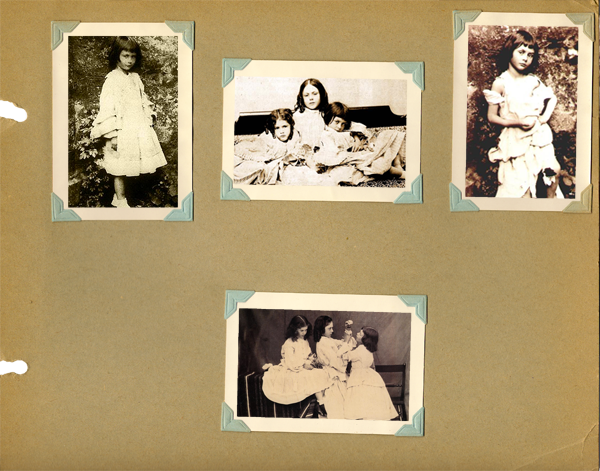
Some of the photos Dodgson took of the Liddell sisters (Lorina, Edith and Alice).
Charles Lutwidge Dodgson was a photography hobbyist. He took many photos throughout his life many of them seem to feature young children, especially girls, mostly his friends' or colleagues' children. The nature/subject of these photos coupled with writings taken from his diary and letters apparently became a subject of concern among some scholars.
The fact that Mrs Liddell, mother of Edith, Lorina and Alice coldly asked Dodgson to stop seing her children without supervision further fuels the idea that Dodgson must have had "impure" thoughts regarding the Liddell girls. The fact that a large part of his diary and many of his photos seem to have been voluntarily destroyed and that his family always declined interviews and to say anything about him even after his death rose a flag of suspicion over Dodgson's relationships with little girls, especially Alice Liddell, his favorite.
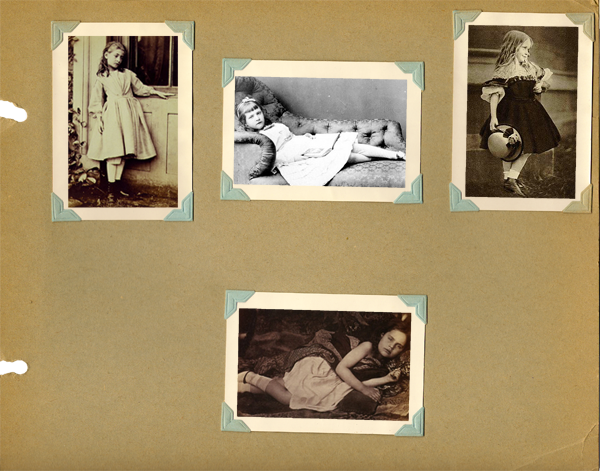
Other photos taken by Dodgson of the young girls he used to call his "child friends".
If we consider what I wrote above, it was not unusual for Victorian grown men and women to enjoy the view and company of children. And contrary to some of his contemporary fellow artists, Dodgson never acted on his aestetic tendency to enjoy the company and the view of little girls even if some of his writings might make our 21st century selves a bit "unconfortable". But it seems that most Victorians considered children as "asexual" beings, experiencing neither lust nor carnal desire. So even if Dodgson's feelings towards little girls might have been "impure" from our point of view, they were not especially considered as such in his times and he never seemed to have actually molested any child.
Ernest Dowson for instance wrote many sonnets about little girls and even proposed to one of them when she was barely 14...
 Further reading
Further reading-
The Victorian child c.1837-1901 by Marah Gubar from the University of Pittsburgh.
-
Lewis Carroll's shifting reputation by Jenny Woolf.
-
The Victorian cult of the child from Plan Elfenbeinturm
-
Lewis Carroll a myth in the making from the victorianweb.
-
Victorian Children, a look into the life and times of Victorian children.
-
Photographs of Alice Liddell, the inspiration for Alice in Wonderland.
Libellés : art and litterature, history
Victorians and the aesthetic myth of children's purity.
After a very long hiatus, I'm back with a new article. This time, I would like to address a very controversial subject which is how most Victorians upper-class poets, artists, men (mostly) regarded children. I'm no specialist on the subject and I only did a pretty light research, moreover it seems that scholars are still questioning the ambiguous relationship many Victorian artists had with young children. To put it in a nutshell, just consider this article as a summary of what I could gather on the subject by reading some essays on the subject.
 "Heaven lies about us in our infancy!"
"Heaven lies about us in our infancy!"
Most of you might have heard of Victorian children either through Lewis Carroll's
Alice's adventures in Wonderland, James Barrie's
Peter Pan or Charles Dickens' numerous novels. You might also know that during queen Victoria's long long reign over the British Empire, the number of children among the global UK population increased a lot, so queen Victoria was actually ruling over an average population composed of more than 1/3 of children under the age of 15. Many children had to work in factories or coal mines, which resulted in an increased child mortality rate (check Dickens' novels about working children, he knows what he's writing about as he, himself was sent to work in an infamous workhouse when he was a child).
But as many Victorians did not seem to mind the fact that children, sometimes under the age of 5, were working in factories, an increasing number of men and women seemed to consider childhood as a "sacred" or "golden" age. It seems that many Victorians revered children as innocent and pure and "unspoiled" beings who should be preserved and whom you enjoyed the company as a distraction from the ugly practical world and the stress, the quick industrialization of the country was putting on the Victorians' shoulders.
But even if Victorians seem to consider children as free from the constraints of their "materialistic" society as one can be, it seems that anything and everything (ranging from teacups to calendars, clothing and magazines) featuring children used to sell out very quickly. And stage plays featuring children used to be very popular as well even if in most of them, children were mostly used as "props" in the background and not acting properly.

Millais' "Cherry Ripe" (1879) and "Bubbles" (1886) were used by the Pears Soap Company on their boxes
 "The cult of the Child"
"The cult of the Child"
The most controversial Victorian adult/child relationship to this day surely is Charles Lutwidge Dodgson (a.k.a. Lewis Carroll) and little Alice Liddell's one. After visiting an exhibition of Dodgson's photographic works in New-York, Vladimir Nabokov is reported to have said there was “a pathetic affinity” between the photographer and the pedophilic narrator of his novel
Lolita... So was Lewis Carroll somebody you would not want children to get close to?

Some of the photos Dodgson took of the Liddell sisters (Lorina, Edith and Alice).
Charles Lutwidge Dodgson was a photography hobbyist. He took many photos throughout his life many of them seem to feature young children, especially girls, mostly his friends' or colleagues' children. The nature/subject of these photos coupled with writings taken from his diary and letters apparently became a subject of concern among some scholars.
The fact that Mrs Liddell, mother of Edith, Lorina and Alice coldly asked Dodgson to stop seing her children without supervision further fuels the idea that Dodgson must have had "impure" thoughts regarding the Liddell girls. The fact that a large part of his diary and many of his photos seem to have been voluntarily destroyed and that his family always declined interviews and to say anything about him even after his death rose a flag of suspicion over Dodgson's relationships with little girls, especially Alice Liddell, his favorite.

Other photos taken by Dodgson of the young girls he used to call his "child friends".
If we consider what I wrote above, it was not unusual for Victorian grown men and women to enjoy the view and company of children. And contrary to some of his contemporary fellow artists, Dodgson never acted on his aestetic tendency to enjoy the company and the view of little girls even if some of his writings might make our 21st century selves a bit "unconfortable". But it seems that most Victorians considered children as "asexual" beings, experiencing neither lust nor carnal desire. So even if Dodgson's feelings towards little girls might have been "impure" from our point of view, they were not especially considered as such in his times and he never seemed to have actually molested any child.
Ernest Dowson for instance wrote many sonnets about little girls and even proposed to one of them when she was barely 14...
 Further reading
Further reading-
The Victorian child c.1837-1901 by Marah Gubar from the University of Pittsburgh.
-
Lewis Carroll's shifting reputation by Jenny Woolf.
-
The Victorian cult of the child from Plan Elfenbeinturm
-
Lewis Carroll a myth in the making from the victorianweb.
-
Victorian Children, a look into the life and times of Victorian children.
-
Photographs of Alice Liddell, the inspiration for Alice in Wonderland.
Libellés : art and litterature, history
The legend of Briar Rose
"The fateful slumber floats and flows
About the tangle of the rose."
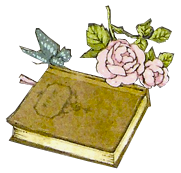
 평화 [pʰjəŋ.hwa]
평화 [pʰjəŋ.hwa]
Child of the 80's born in Seoul (South Korea) - Living and working in Paris (France) - Languages spoken: French / English (surprise surprise, despite my place of birth I don't speak or understand a word of Korean!) - Languages studied but not practiced enough to speak them fluently: Spanish / Japanese / Latin (not spoken anymore anyway) / Ancient Greek - Studied: History / specialised in French Medival History -
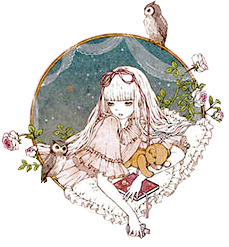




















 평화 [pʰjəŋ.hwa]
평화 [pʰjəŋ.hwa]
Enregistrer un commentaire
1. Comments are moderated.
2. Please don't post spam/advertisements, or your comment won't be published.
3. At last, thanks for your comment!